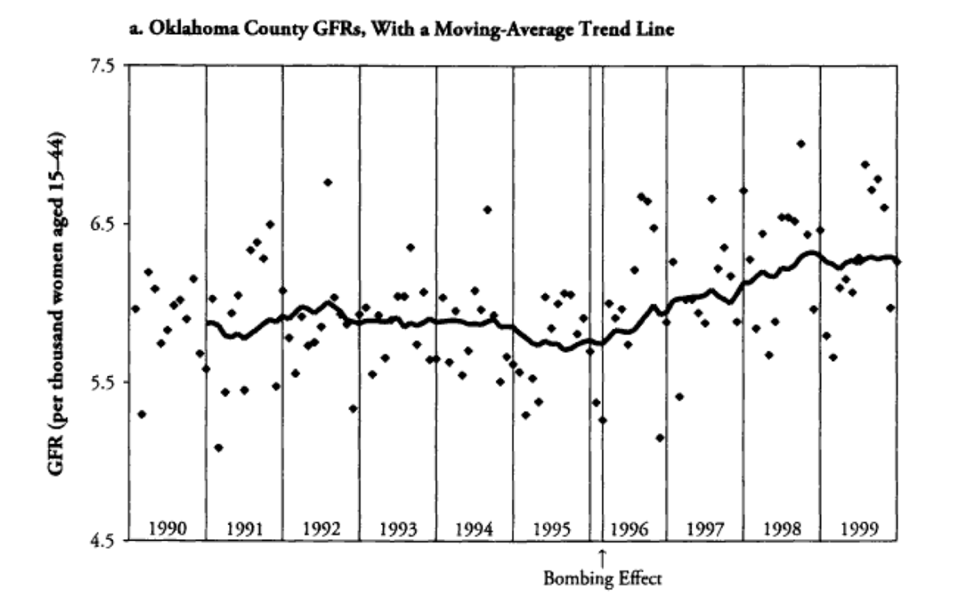This explainer was originally published in Covering COVID-19, our daily Poynter briefing about journalism and coronavirus, written by senior faculty Al Tompkins. Sign up here to have it delivered to your inbox every weekday morning.
Many on social media have pondered whether there will be a baby boom due to quarantine and stay-at-home measures related to the coronavirus.
The short answer is probably not. I have seen a fair amount of speculation that since people are cooped up, we will see a late 2020/early 2021 increase in births.
But the birthrate in the U.S. has been in steady decline since the 2008 recession and demographers said that a pandemic is not the kind of event that encourages couples to say, “What a great time to have a baby.”
Alan Yuhas at The New York Times reported:
“Many people in childbearing ages were already worried about their futures, and now they may face unemployment as well,” said Jennifer Johnson-Hanks, a sociology professor at the University of California. “That kind of anxiety is not conducive to having a child.”
In contrast, the original baby boom, between 1946 and 1964, took place in an era of postwar euphoria and financial stability for many Americans. Couples married young, could afford homes and had children quickly. And it was not until 1960 that the federal government approved the first birth control pill.
This notion of events like power outages and winter storms creating baby booms may have roots in the New York City blackout of 1965. There were reports of a great boom in births nine months later but a University of North Carolina researcher found it was all wrong. The research found that there was nothing remarkable at all about New York City’s 1966 birthrate compared to other years. In fact, some researchers call the whole “blackout baby boom” speculation an urban legend.
Rick Evans, a computational social scientist at the University of Chicago, said in a Washington Post commentary that at most we might see a “baby blip,” not a “baby boom.”
Evans said he and his fellow researchers have found that whether there is a baby boom or not after a big event depends on the nature of the event. He studied hurricanes on the East Coast, for example, and found that a low-level storm that makes the lights flicker is way different from a hurricane that causes evacuations. Evans wrote:
For low-level storm advisories such as tropical storm watches, we measured a positive and statistically significant effect on births nine months later. An extra 24 hours of tropical storm watch advisory resulted in a 2% increase in births. This is evidence of the old New York City blackout hypothesis: When the lights go out, stores are closed and TVs are off, we make more babies.
On the flip side, we also found that an extra 24 hours of the most severe advisory — hurricane warning — resulted in a 2% decline in births. You can’t make babies if you’re running for your life. As catastrophic advisories went from less severe to more severe, the effect of births went from positive to negative. However, even at both extremes, a 2% change in monthly births in the average county is equivalent to only one or two extra (or fewer) births — a change that could easily go unnoticed.
One of the more remarkable birthrate increases in modern times came in the county around Oklahoma City after the April 1995 bombing at the federal courthouse there. Researchers at the University of Oklahoma found that beginning nine months after the bombing, Oklahoma County (where Oklahoma City is the county seat) saw a substantial increase in births.
The researchers compared that to a decade of data. And, keeping in mind the bombing happened in April, if you go out nine and a half months from, say May or June, you do not see as much of an increase. The increase happened nine months from the April bombing.
Three theories for why births might go up after a tragedy
This is a bit darker of a theory that emerges from tragedy, but I found it fascinating.
- Psychologists said they discovered one possible reason for a birthrate increase after a tragedy is due to what they call “the replacement/insurance theory.” The notion goes that when there is a loss of life, especially a loss of children, then parents have more children as a response.
- Another theory for birth booms after a tragedy is, because things are going better, parents feel they are in a safe place and it is time to raise a family. Experts call this the “community influence theory.”
- A third theory behind birth booms following tragedy is called the “terror management theory,” and it follows the notion that tragedy makes us recognize our own mortality and we respond by starting a new generation.
Al Tompkins is senior faculty at Poynter. He can be reached at atompkins@poynter.org or on Twitter, @atompkins.








